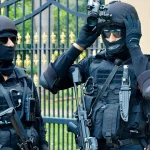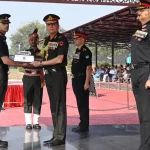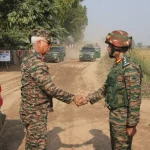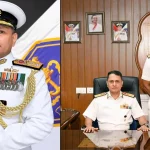To join the Indian Navy after completing the 12th grade is a dream for many aspiring students, especially those intrigued by the challenges and adventures of naval service. The Indian Navy, recognized as one of the most modern and formidable naval forces globally, plays a pivotal role in ensuring national security, protecting maritime interests, and conducting humanitarian missions. The journey to becoming a naval officer or sailor, however, involves a clear understanding of the pathways available, the requirements for each, and the rigorous selection processes that candidates must navigate.
Historical Context
The Indian Navy has evolved significantly since its establishment in 1612. From its early beginnings as a few ships protecting maritime interests, it has grown into a modern naval force, showcasing advanced technology and strategic capabilities. With India’s increasing maritime interests and the geopolitical dynamics of the Indian Ocean region, the Navy continues to be a critical component of national defense. The pathways to join, such as the National Defence Academy (NDA) and specialized entry schemes, underscore the emphasis on rigorous training and ethical leadership.
Understanding the Pathways to Join the Indian Navy
Aspiring candidates looking to join the Indian Navy primarily have two prominent routes: through the National Defence Academy (NDA) and the 10+2 B.Tech Cadet Entry Scheme. Alternatively, there are avenues for those who wish to serve as sailors rather than officers, each route marked by its unique eligibility criteria and selection processes.
1. National Defence Academy (NDA) Entry
The NDA is often regarded as the most prestigious entry point for individuals aspiring to become naval officers. The selection process is competitive and comprehensive, designed not just to evaluate academic knowledge but also to gauge leadership, physical fitness, and mental resilience.
Eligibility
Candidates must meet the following criteria to be eligible for the NDA:
- Unmarried males or females aged between 16.5 to 19.5 years.
- Must have passed their 12th grade, with a focus on Physics and Mathematics.
Selection Process
The selection process comprises the following steps:
- Written Examination: Conducted by the Union Public Service Commission (UPSC) twice a year, this exam tests candidates in Mathematics and General Ability. In 2023, approximately 1,70,000 candidates appeared for the NDA exam, reflecting its popularity and competition.
- Services Selection Board (SSB) Interview: This rigorous 5-day process assesses candidates on their leadership qualities, physical and mental fitness, and overall suitability for a career in the armed forces.
- Medical Examination: A thorough medical check ensures that candidates meet the stringent health standards required to serve in the Navy.
Training
Upon successful selection, candidates undergo a comprehensive training program:
- A 3-year training at NDA, Pune, encompassing various military disciplines, academic studies, and physical training.
- Followed by dedicated naval training at the Indian Naval Academy (INA) located in Ezhimala, Kerala.
Training at NDA not only instills leadership qualities but also sets the foundation for a career in the Indian Navy, ensuring that graduates are well-prepared for the challenges ahead.
2. 10+2 B.Tech Cadet Entry Scheme
This entry route is specifically designed for individuals who wish to pursue a career in the technical branches of the Navy, combining academic education with naval training.
Eligibility
Candidates must fulfill the following criteria:
- Must have passed the 12th grade with Physics, Chemistry, and Mathematics (PCM), securing a minimum of 70% aggregate along with at least 50-60% in English.
Selection Process
The selection process for this pathway involves:
- JEE Main Rank: Candidates must qualify for the Joint Entrance Examination (JEE) Main, with the rank determining eligibility for selection. The JEE Main rank is valid for one year post-declaration of results.
- SSB Interview and Medical Examination: Similar to the NDA route, candidates undergo the SSB interview and a detailed medical examination.
Training
Selected candidates undergo a 4-year B.Tech program at INA, allowing them to earn a technical degree while simultaneously receiving naval officer training. This dual approach ensures that graduates are equipped with both academic and technical skills vital for their roles.
Additional Options After 12th
For those interested in joining the Navy but not necessarily on the officer track, there are various pathways available for enlisting as sailors. These include:
- Artificer Apprentice (AA): Focuses on technical roles and is a competitive entry requiring strong academic backgrounds.
- Senior Secondary Recruit (SSR): For those wanting to serve in various capacities, including technical and non-technical roles.
- Matric Recruit (Chef, Steward): Entry for those who have completed high school and wish to follow non-officer roles.
- Agniveer SSR: An entry scheme designed for younger candidates, including those with 10th or 12th-grade education.
These pathways don’t require previous engagement in the NDA or engineering disciplines, catering to a broader audience and emphasizing the diverse roles within the Navy.
Key Aspects of Training and Career Progression
Regardless of the chosen pathway, several key aspects common to all training avenues contribute to the holistic development of candidates:
Physical Fitness
Physical fitness is a cornerstone of Navy training. Rigorous physical training regimes and assessments ensure that candidates are in peak condition to handle the demands of naval service.
Leadership Skills
Both the NDA and B.Tech programs emphasize the development of leadership and decision-making skills. Trainees are placed in various scenarios that test integrity, teamwork, and adaptability.
Subject Mastery
The training structure entwines academic learning with practical applications. Candidates gain deep insights into naval operations, technology, and strategic leadership.
Challenges and Solutions
While joining the Indian Navy is a desirable goal for many, candidates often face several challenges:
- Competition: With thousands vying for limited positions, the competition is fierce. To overcome this, candidates must dedicate themselves to a strict study regimen, engage in mock tests, and physical training sessions.
- Physical Demands: The physical fitness demands can be daunting. Engaging in regular exercise, nutrition management, and possibly joining preparatory training programs can mitigate these challenges.
- Mental Resilience: The psychological pressure during the selection process is significant. Aspiring candidates can benefit from strategies like mindfulness, stress management workshops, and peer support groups.
Future Trends and Predictions
As the global landscape evolves, the role of the Indian Navy will continue to expand. Future trends indicate a rise in the importance of technology and cyber warfare, underscoring the need for candidates with strong technical backgrounds. The Navy is likely to enhance its recruitment strategies and training programs to include more technology-focused curriculums and innovations in naval strategies.
Conclusion
Joining the Indian Navy after the 12th grade is not merely a career choice; it is a commitment to honor, duty, and service. Whether through the esteemed NDA or the 10+2 B.Tech Cadet Entry Scheme, candidates step into a world that offers challenges, growth, and the opportunity to serve the nation. The structured pathways, rigorous selection processes, and comprehensive training ensure that those who rise to the occasion emerge as capable and confident leaders. For aspiring candidates, preparation is key; dedication to academic excellence, physical fitness, and mental resilience sets the foundation for a successful and rewarding career in one of the most respected branches of the Indian Armed Forces.
In this ever-changing world, the Indian Navy stands as a beacon of strength and unity, and for those ready to embrace the challenge, the journey to becoming a naval officer starts now. Aspiring candidates are encouraged to explore the necessary resources, guidance, and preparations needed to navigate this remarkable journey effectively. For invaluable materials, consider exploring resources from SSBCrack and SSBCrackExams, which provide comprehensive study materials and coaching tailored to these pathways.
As you consider this opportunity, remember that the call to serve is a call to greatness. Embrace it.












